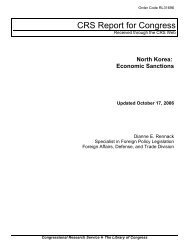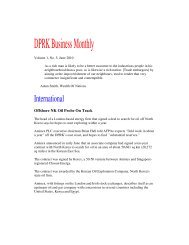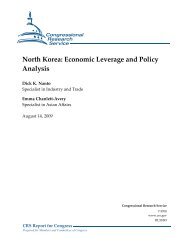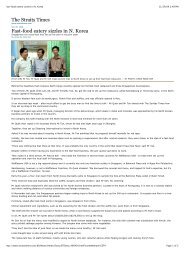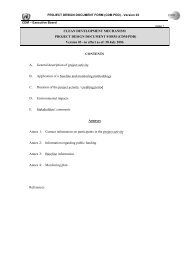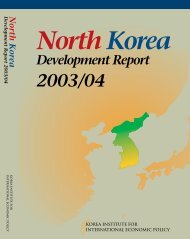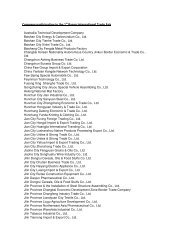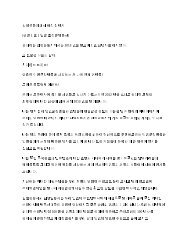North Korean Policy Elites - Defense Technical Information Center
North Korean Policy Elites - Defense Technical Information Center
North Korean Policy Elites - Defense Technical Information Center
Create successful ePaper yourself
Turn your PDF publications into a flip-book with our unique Google optimized e-Paper software.
EXECUTIVE SUMMARY<br />
The <strong>North</strong> <strong>Korean</strong> government is neither a monolith nor a “black box.” It is a semiprivatized<br />
amorphous collection of rivaling immobile organizations and stove-piped<br />
bureaucracies that often act at cross purposes and are pressed hard and corrupted by the<br />
individual and group interests of competing clans, and social and political forces vying for power,<br />
prestige, and wealth invested by the Dear Leader. <strong>North</strong> <strong>Korean</strong> policy-makers are rational and<br />
very predictable, whether one likes or dislikes their actions.<br />
Kim Jong Il is the absolute monarch presiding over the Byzantine Court on the Taedong<br />
River. This court encompasses at least six immediately related families (1+2+3), all competing<br />
for the emperor’s attention, devotion, and favors, and jockeying for position in the event of post-<br />
Kim Jong Il succession.<br />
Five major political forces, affecting all spheres of the <strong>North</strong> <strong>Korean</strong> life - namely the<br />
national security establishment, the old guard, the technocrats, the local vassals, and the<br />
compatriots - approach the “extended family clan” with their own visions for national<br />
development and policy recommendations for the burning issues of the day, and attempt, with<br />
different degrees of success, to penetrate and influence the Kim “family court” in order to ensure<br />
the representation of their corporate interests at the heart of national decision-making at the time<br />
of political succession.<br />
These five “transmission belts” connect the “hub” of the <strong>North</strong> <strong>Korean</strong> policymaking<br />
- the Dear Leader and Supreme Commander-in-Chief Kim Jong Il - with the “outer<br />
circle” of the <strong>North</strong> <strong>Korean</strong> elites - the brain-feeding tubes at the center and in provinces, who<br />
also constitute the “protective belt,” absorbing external shocks and safe-guarding the regime<br />
from mass discontent.<br />
Party membership serves as an entry ticket into the elite club, but increasingly it is taken<br />
for granted and is no longer sufficient for the new nomenclature. Access to state assets, prestige,<br />
and power, accumulation of private wealth, or government licensing authority is a must to<br />
qualify for the new elite status. Among the members of the same interest-based establishment,<br />
there may exist significant value gaps on the ideological continuums from conservative to liberal<br />
and from moderate to radical. But, different “transmission belts” tend to articulate and aggregate<br />
divergent strategic priorities and policy preferences among the <strong>North</strong> <strong>Korean</strong> elites.<br />
IV-S-1



